IJSRA by Cherene de Bruyn
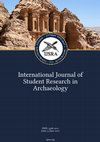
by Gonzalo Linares Matás, Devin L Ward, John Vandergugten, Cherene de Bruyn, Jacqueline Jordaan, Valletta Verezen, Dannielle Croucher, Rebekah Hawkins, Ariane Maggio, Kate Rose, Jennifer Bates, Camilo GC, Patricia Kenny, Frances Koziar, Rhiannon C Stammers, Christina M Carolus, and IJSRA Journal Contents
Gonzalo Linares Matás - Presentation of the third issue of IJSRA
Interview
Cherene de B... more Contents
Gonzalo Linares Matás - Presentation of the third issue of IJSRA
Interview
Cherene de Bruyn, Jacqueline Jordaan - Regional feature: Perspectives from southern African archaeology professionals
II Articles
Valletta Verezen - The Crumbling Wonder: A damage- and risk-assessment of sandstone monuments and natural features in the Petra Archaeological Park (Jordan)
Frances Koziar, Camilo Gomez - From Colonialism to Nationalism, the Indian to Indigenismo: A History of Central Mexican Archaeology
Dannielle Croucher - Quantification of Interpersonal Violence in Skeletal Remains from Medieval and Post-Medieval London
Amanda Padoan - Gendering the Traces
III Conference Reviews
Rebekah Hawkins, Jacqueline Matthews, Francesca McMaster - Australian Archaeological Association 2016 Conference Review
Barney Harris, Dannielle Croucher, Hayden McKee - The 3rd Neolithic and Early Bronze Age Research Student Symposium, UCL
IV Book Review - Ariane Maggio
Review of Crowder, C. & Stout, S. D. (eds.) 2012. Bone Histology: An Anthropological Perspective
Papers by Cherene de Bruyn
Southern African archaeology is diverse in topic and practice. From human origins to the historic... more Southern African archaeology is diverse in topic and practice. From human origins to the historical period, archaeology in this region provides a kaleidoscope of life ways over a vast amount of time. From colonial roots, followed by apartheid restrictions, to current initiatives to decolonise the discipline, the practice of archaeology is undergoing transformation. Southern African archaeology is facing challenges. ese challenges are protecting local heritage and sites, addressing the claims of various stakeholders, connecting with non-academic audiences, and developing and retaining archaeologists, by no means an exhaustive list or challenges entirely unique to southern Africa. We invited archaeologists to respond to a questionnaire about the state of archaeology in southern Africa, and the impact student led initiatives have on the discipline.
The Digging Stick Volume 37, No 2, 2020
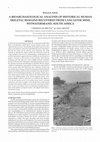
The South African Archaeological Bulletin , 2017
In 1996, during ground-laying work for the construction of Main Reef Road in Krugersdorp, South A... more In 1996, during ground-laying work for the construction of Main Reef Road in Krugersdorp, South Africa, human skeletal remains were inadvertently uncovered. The identities of the people interred in these graves were unknown. Since these individuals have never been identified and the context of the cemetery never confirmed, this study attempts to identify the remains within their historical context by using techniques derived from bioarchaeology. Archaeological and archival information suggests that these individuals were buried in a pauper's cemetery on the premises of the Lancaster Gold Mining Company, and that they were most probably interred somewhere between 1895 and 1914. Individual osteobiological profiles and possible indicators of trauma and pathology are identified. Results suggest a MNI of 19 individuals, representative of African men and women of mostly young adult and adolescent ages. Infectious disease and non-specific signs of disease indicate the general poor health and harsh living and working conditions often associated with migrant labour. Based on the bioarchaeological findings, the Lancaster sample represents early migrant workers who moved to the Witwatersrand area prior to the implementation of the closed-compound system. These people probably worked on gold mines as unskilled mine labourers or in the low-income sector in the nearby towns, lived in informal settlements, and died as paupers. Even though these people remain unnamed, their remains enable us to reconstruct some aspects of their lives, in some sense giving a voice to a small group of people representative of the millions of migrant workers who shaped South Africa's industrial economy.
The Digging Stick 31(1):9-11., Apr 2014
Thesis by Cherene de Bruyn
2016/2017 - MA Dissertation, Institute of Archaeology, UCL

In 1996, during ground-laying work for the construction of Main Reef Road human skeletal remains ... more In 1996, during ground-laying work for the construction of Main Reef Road human skeletal remains were inadvertently uncovered. The identities of the remains interred in these graves were unknown. Currently these skeletal remains are stored in the Archaeological Human Remains Collection at the Department of Anatomy, University of Pretoria. Due to the fact that these individuals have never been identified and the context of the cemetery never confirmed this study attempted to identify the remains within their historical context by using techniques derived from bioarchaeology. The aim of this study was therefore to conduct a bioarchaeological analysis of the historic human skeletal remains recovered from Lancaster mine. This was done by means of standard physical anthropological analyses to determine each individual’s osteobiological profile as well as to identify possible indicators of trauma and pathology. . Results suggested an MNI of 19 individuals for the Lancaster sample. Of the 19 individuals three were classified as male and four as female. Seven of the individuals were classified as young adults (20-34 years), while seven other individuals were classified as adolescents (<20 years). Infectious disease and non-specific signs of disease were identified indicating the general poor health and harsh living and working conditions often associated with a migrant labourer lifestyle. Archaeological and archival information suggested that these individuals were buried in a pauper’s cemetery on the premises of the Lancaster Gold Mining Company and that they were most probably interred somewhere between 1895 and 1914. Based on the archaeological and physical anthropological findings the Lancaster sample was concluded to represent early migrant workers who moved to the Witwatersrand area with their families prior to the implementation of the closed-compound system. These people most probably worked on gold mines as unskilled mine labourers or in the low income sector in the nearby towns and were forced to live in informal settlements or what was termed worker’s locations where they eventually died as paupers.

The Waterberg region in the Limpopo Province of South Africa is an area rich in cultural historie... more The Waterberg region in the Limpopo Province of South Africa is an area rich in cultural histories and archaeological sites. The Masebe Nature Reserve is situated in this region. This thesis will present results on information gathered and research done on the stone walls and sherds recorded on the Iron Age hill settlement next to the Thabana ya Kgosi hill. Data gathered through detailed sampling strategies will be used to determine the spatial distribution and variation of the ceramics on the site. Historical sources and archaeological data indicate the hill site next to the Thabana ya Kgosi hill in the Masebe Nature Reserve was reoccupied multiple times, since the occurrences of multiple ceramic phases of the Early and Late Iron Age are present on the surface of the site. The Eiland ceramics found on the site marks the first occupation which dates to AD 1000-1300 which is followed by Undecorated and Moloko ceramics of Sotho-Tswana and Nguni people in AD 1350 - 1500. The Moor Park tradition indicates the occupation of the site by the Northern Transvaal Langa Ndebele from around AD 1854. The identity of the occupants and the socio-historical context of the site will be investigated through the material culture found at the site and the local oral histories in the region. This study will contribute to the larger body of knowledge related to Iron Age settlements in the Waterberg.
Posters by Cherene de Bruyn
In 1996, during ground-laying work for the construction of Main Reef road, human skeletal remains... more In 1996, during ground-laying work for the construction of Main Reef road, human skeletal remains were inadvertently uncovered . Soon after the discovery was made the Department of Anatomy, University of Pretoria, was asked to conduct the rescue excavations of the exposed graves and human skeletal remains. Construction activities unfortunately saw to the partial and in some cases complete, disturbance and commingling of an unknown number of graves . The identities of the individuals interred in these graves were however unknown as no headstones or surface indications were present at the time.
De Bruyn, C., Nienaber, W.C., Meyer, A.
43rd Annual Conference of the Anatomical Society of ... more De Bruyn, C., Nienaber, W.C., Meyer, A.
43rd Annual Conference of the Anatomical Society of Southern Africa (ASSA), Khaya iBhubesi Parys, Free State, South Africa, 9-13 May 2015.
De Bruyn, C., Nienaber, W.C., Meyer, A.
Heritage Reports by Cherene de Bruyn

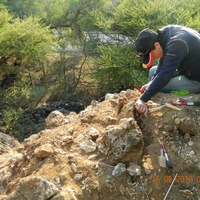


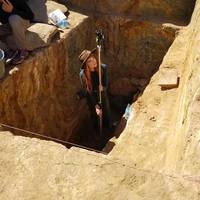
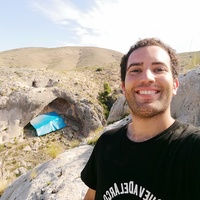





Uploads
IJSRA by Cherene de Bruyn
Gonzalo Linares Matás - Presentation of the third issue of IJSRA
Interview
Cherene de Bruyn, Jacqueline Jordaan - Regional feature: Perspectives from southern African archaeology professionals
II Articles
Valletta Verezen - The Crumbling Wonder: A damage- and risk-assessment of sandstone monuments and natural features in the Petra Archaeological Park (Jordan)
Frances Koziar, Camilo Gomez - From Colonialism to Nationalism, the Indian to Indigenismo: A History of Central Mexican Archaeology
Dannielle Croucher - Quantification of Interpersonal Violence in Skeletal Remains from Medieval and Post-Medieval London
Amanda Padoan - Gendering the Traces
III Conference Reviews
Rebekah Hawkins, Jacqueline Matthews, Francesca McMaster - Australian Archaeological Association 2016 Conference Review
Barney Harris, Dannielle Croucher, Hayden McKee - The 3rd Neolithic and Early Bronze Age Research Student Symposium, UCL
IV Book Review - Ariane Maggio
Review of Crowder, C. & Stout, S. D. (eds.) 2012. Bone Histology: An Anthropological Perspective
Papers by Cherene de Bruyn
Thesis by Cherene de Bruyn
Posters by Cherene de Bruyn
43rd Annual Conference of the Anatomical Society of Southern Africa (ASSA), Khaya iBhubesi Parys, Free State, South Africa, 9-13 May 2015.
Heritage Reports by Cherene de Bruyn
Gonzalo Linares Matás - Presentation of the third issue of IJSRA
Interview
Cherene de Bruyn, Jacqueline Jordaan - Regional feature: Perspectives from southern African archaeology professionals
II Articles
Valletta Verezen - The Crumbling Wonder: A damage- and risk-assessment of sandstone monuments and natural features in the Petra Archaeological Park (Jordan)
Frances Koziar, Camilo Gomez - From Colonialism to Nationalism, the Indian to Indigenismo: A History of Central Mexican Archaeology
Dannielle Croucher - Quantification of Interpersonal Violence in Skeletal Remains from Medieval and Post-Medieval London
Amanda Padoan - Gendering the Traces
III Conference Reviews
Rebekah Hawkins, Jacqueline Matthews, Francesca McMaster - Australian Archaeological Association 2016 Conference Review
Barney Harris, Dannielle Croucher, Hayden McKee - The 3rd Neolithic and Early Bronze Age Research Student Symposium, UCL
IV Book Review - Ariane Maggio
Review of Crowder, C. & Stout, S. D. (eds.) 2012. Bone Histology: An Anthropological Perspective
43rd Annual Conference of the Anatomical Society of Southern Africa (ASSA), Khaya iBhubesi Parys, Free State, South Africa, 9-13 May 2015.